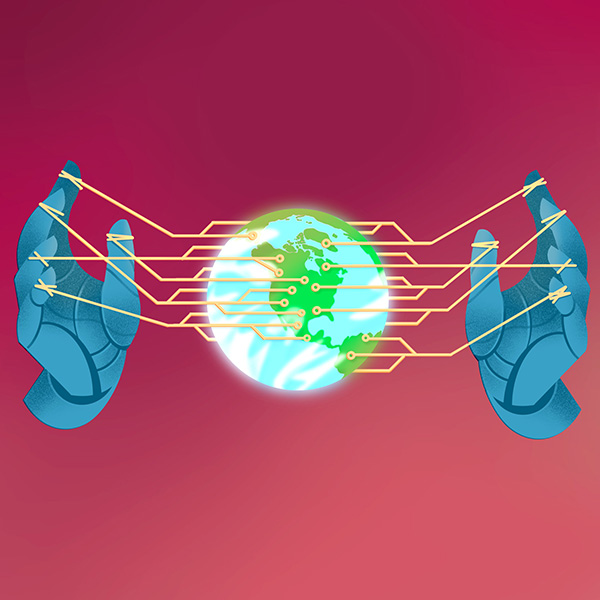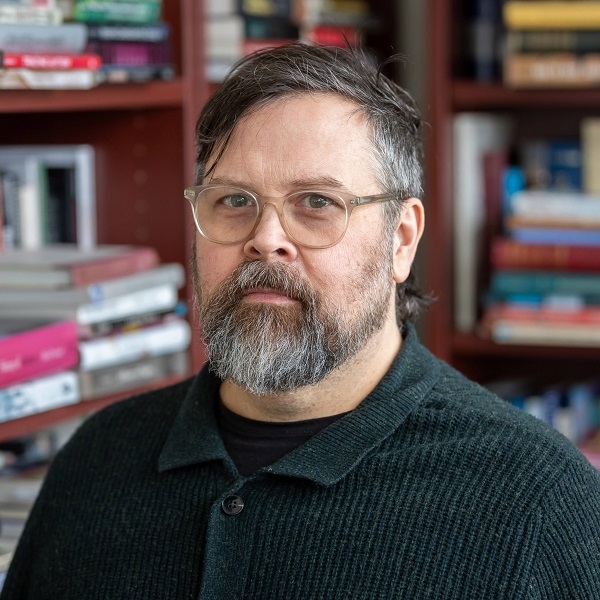One evening in early March, Reza Farivar, MSc’02, PhD’08, was reading about the devastating impact of the coronavirus in Italy and how treatment was often stymied by the lack of life-saving ventilators.
“It blew my mind that, in a rich country, the lack of a fairly old medical device was causing people to die,” says Farivar, McGill’s Canada Research Chair in Integrative Neuroscience and a scientist at the Research Institute of McGilll University Health Centre (RI-MUHC).
The next morning, Farivar, who is also an associate professor in the Department of Ophthalmology at McGill’s Faculty of Medicine, consulted some MUHC Intensive Care Unit physicians about ventilators. With the advent of new technology and new tools like 3D printers and computer-assisted design, surely the production of ventilators could be accelerated to meet the demands of ICUs around the world?
That’s when the idea for a ventilator challenge emerged, a two-week global contest to seek out a design for a low-cost, easy-to-use and easy-to-build ventilator which could be deployed anywhere in the world to save lives.
Armed with an outline of his proposal, Farivar got rapid buy-in from the Montreal General Hospital Foundation and the RI-MUHC which not only embraced the idea, but also joined together to launch the Code Life Ventilator Challenge, backed by a prize of $200,000 CAD for the winning designs.
Researchers and medical staff at the Montreal General Hospital quickly assembled a committee of expert advisors (ICU physicians, engineers and others) to define specifications for the ventilator challenge and to judge submissions.
The concept of a ventilator is relatively simple: a device which delivers breathable air into the lungs of a patient and carries expelled air out of the lungs – but the technical specifications are critical. For example, the device must deliver the exact pressure required for the lungs (too much damages the lung, too little deprives the lung of oxygen).
The correct concentration of oxygen is also vital, as is the ability to humidify the air entering the patient’s lungs.
Once the specifications were finalized, Farivar and his colleagues launched the challenge and waited to see if anyone would answer the call.
They didn’t have to wait long. When the contest closed on March 31st, a staggering 2,639 participants, 1,029 teams and 94 participating countries submitted entries.
“I was flabbergasted,” says associate project leader Stuart Kozlick, strategic advisor, executive-in-residence at Fasken, and professor of practice in the Department of Surgery at McGill’s Faculty of Medicine.
Kozlick, a 20-year veteran of the medical device industry, brings vital regulatory and engineering skill to the initiative. He connected with Farivar by chance through a mutual acquaintance. With his background, Kozlick is well placed to help expedite the regulatory steps that must be taken to approve any ventilator designs. He says he’s humbled by the traction that the contest has generated.
“About 200 subject matter experts volunteered in a matter of two and a half weeks,” he says.
The ventilator challenge now moves into the next phase as the advisory panel whittles the entries down to the best five or ten projects and then, on April 15th, the three winning designs will be announced. Those top projects will subsequently be made available on the ventilator challenge website for public download.
To an industry veteran like Kozlick, the rapid turnaround time is unprecedented.
“For medical devices in general, the traditional regulatory approval timeline ranges from 12 months to eight years, depending on the device classification,” he says. “We’re trying to do everything we can to condense it, while maintaining safety and efficacy of the devices selected.”
“We hope to see a number of devices in use by the end of June,” adds Farivar.
In the meantime, both Farivar and Kozlick are looking to McGill alumni to volunteer their expertise in moving the project forward.
“We need more compliance, manufacturing and technical experts,” says Farivar. “Interested volunteers can find a sign up form on our website. We need as many hands on deck as possible.”


